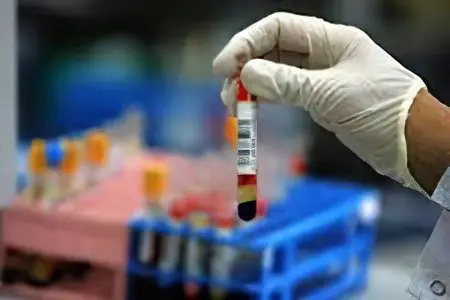Contents
What is erythrocytosis?

Erythrocytosis – this is a state of the human body associated with a pathological increase in the number of red blood cells and hemoglobin levels in the blood up to 6 T/l and 170 g/l (or more), respectively. Erythrocytosis is precisely an indicator of pathology, but not a disease as such.
Most often, this state is considered from an adaptive position and is one of the functions of the body in a certain pathophysiological process. In some cases, erythrocytosis is a manifestation of hypoxia in its chronic course or oncology.
Causes of erythrocytosis
The occurrence of erythrocytosis is facilitated by several reasons that depend on the varieties of this pathology. In such a state, the relative and true forms are distinguished. Relative erythrocytosis is characterized by a large number of red blood cells per unit volume of blood, while the blood plasma is significantly reduced. The number of erythrocytes remains unchanged.
Relative erythrocytosis occurs for the following reasons:
the body loses a large amount of fluid, but cannot fully replenish it;
stressful situations;
hypertensive crises;
different stages of obesity.
True erythrocytosis is understood as an increase in the number of erythrocytes in the blood as a result of their intense appearance in the bone marrow.
Several reasons contribute to the occurrence of absolute erythrocytosis:
Genetics. Changes at the enzymatic level of the composition of the erythrocyte, which is responsible for the attachment and release of oxygen. Lack of oxygen in tissues and organs triggers the mechanism of increasing red blood cells in the bone marrow.
hypoxic changes. High hemoglobin levels due to carbon monoxide exposure (especially common in smokers), respiratory disease, Pickwick syndrome and heart defects lead to a similar condition.
High levels of erythropoietin production – a stimulator of erythrocyte formation, resulting from kidney diseases (renal cyst, hydronephrosis, hypernephroma) and malignant neoplasms (pheochromocytoma, hepatoma, pituitary adenoma, cerebellar hemangioblastoma).
Symptoms of erythrocytosis

Symptoms of erythrocytosis depend on the stage of the course of the pathological condition.
The first (initial) stage corresponds to moderate blood erythrocytosis with the following symptoms:
the occurrence of panmyelosis in the red bone marrow;
absence of vascular and visceral complications;
slight enlargement of the spleen, not amenable to palpation.
This stage can take a long time, for several years.
Next comes the proliferative (deployed) stage, which is marked by the following symptoms:
plethora of pronounced character;
the occurrence of hepatosplenomegaly;
recurrent thrombosis;
depletion of the body;
growth of basophil cells;
increased concentration of uric acid in the blood serum.
At this stage, erythrocytosis is diagnosed.
The next stage is anemic, which is the stage of exhaustion when:
the liver and spleen increase in size;
in the blood there is an increasing saturation with pancytopenia;
in the red bone marrow, lesions with myelofibrosis are noted.
In addition to all the symptoms of the underlying disease in patients with established erythrocytosis, the following are observed:
special purple cyanosis;
dizziness, up to fainting;
headache;
nasal bleeding;
frequent thrombotic complications.
Primary and secondary erythrocytosis

The etiology of erythrocytosis divides them into primary, or hereditary, and secondary, i.e. acquired.
Secondary erythrocytosis is characteristic of various somatic diseases and has a very diverse clinical picture. The hemogram, as a rule, reveals elevated red blood cell counts – moderate or significant. Leukocytes and platelets are within normal limits.
In the event that, as a result of the examination, the patient excludes the presence of secondary erythrocytosis, they speak of the hereditary nature of the pathological condition.
Primary erythrocytosis is most often diagnosed in children and adolescents. The disease has some features:
discoloration of the face, or red cyanosis;
a blood test fixes overestimated indicators of red blood cells, hemoglobin and hematocrit;
the number of leukocytes and platelets is at the limits of the norm;
blood viscosity is increased due to overflow of blood vessels;
blood flow in the vessels slows down.
In the absence of treatment of this type of erythrocytosis, vascular complications are possible, especially with regard to the blood coagulation factor, leading to the formation of thrombosis.
Treatment of erythrocytosis

The main task of the treatment of erythrocytosis is the removal of excess, excessively occurring erythrocytes by reducing the degree of blood viscosity. In therapy, a complex of methods with the use of drugs is used. If erythrocytosis is associated with diseases of the respiratory or cardiovascular system, then the underlying disease is treated, first of all. The main rule in the fight against erythrocytosis is to eliminate the cause of the pathological condition.
Hypoxic erythrocytosis requires therapeutic measures using oxygen. Vascular shunts are treated with surgery.
For smoking patients, the first and main recommendation is to give up the addiction. Excess body weight is eliminated through a strict diet.
In exceptional cases, when it is impossible to establish the root cause of erythrocytosis, it is necessary to assess the real threat and the likelihood of developing undesirable consequences and complications.
A common method of treatment is bloodletting. However, it requires caution in diseases such as chronic pulmonary obstruction, heart defects of various origins. Similar diseases associated with erythrocytosis allow for bloodletting. The volume of blood during such procedures should not exceed 200 ml weekly with a hematocrit of at least 50%. A hematocrit of 50 to 60% is a relative indication for bloodletting, and a 60% barrier is a clear indication for such a procedure.
With erythrocytosis of any kind, do not carry out therapy using cytostatic drugs. Treatment also excludes the intake of vitamin complexes. The prognosis for the development of a pathological condition and complete recovery depends on the underlying disease.
A clinical blood test allows you to determine many different indicators, including developing erythrocytosis. An experienced doctor will be able to assess the state of the hematopoietic organs and the functioning of the organs and systems of the human body precisely according to the result of this analysis. Competent and timely received treatment will avoid serious complications and will establish the normal functioning of the circulatory system.









